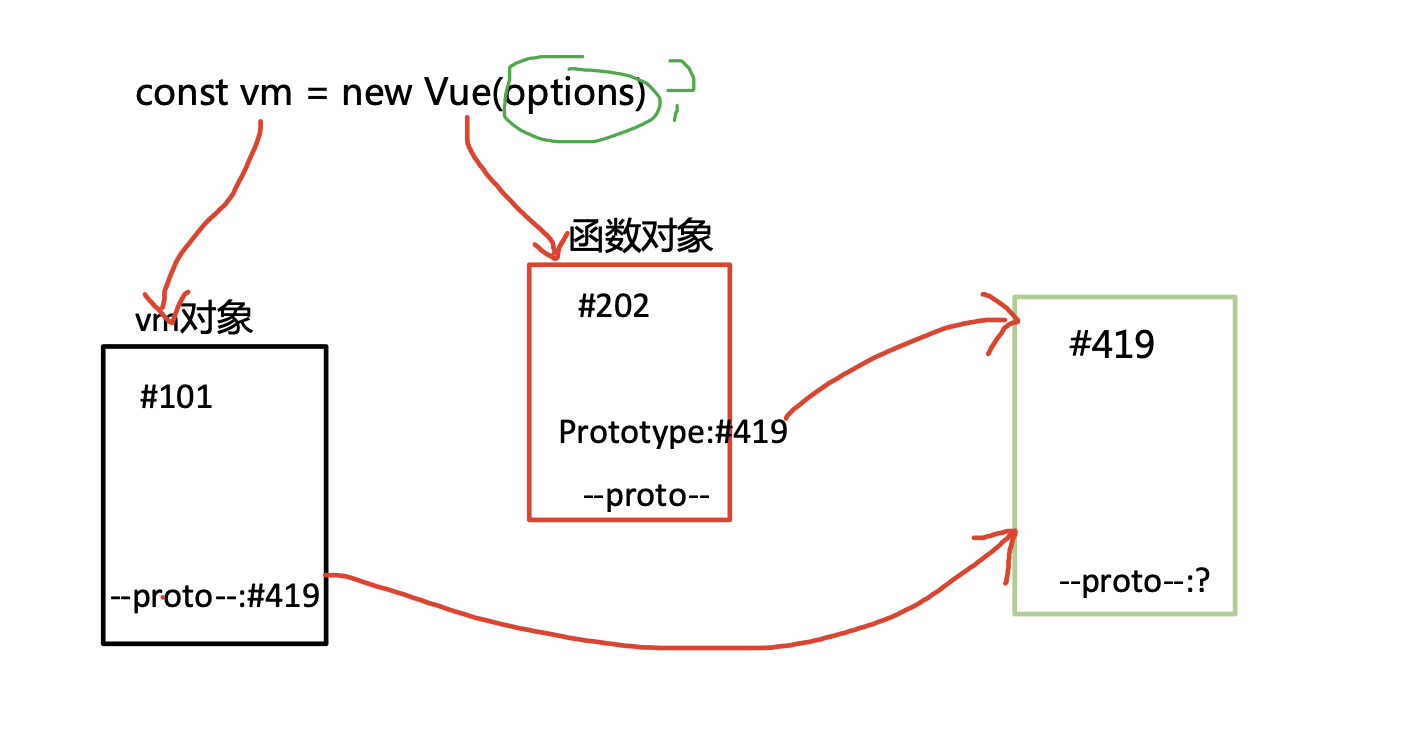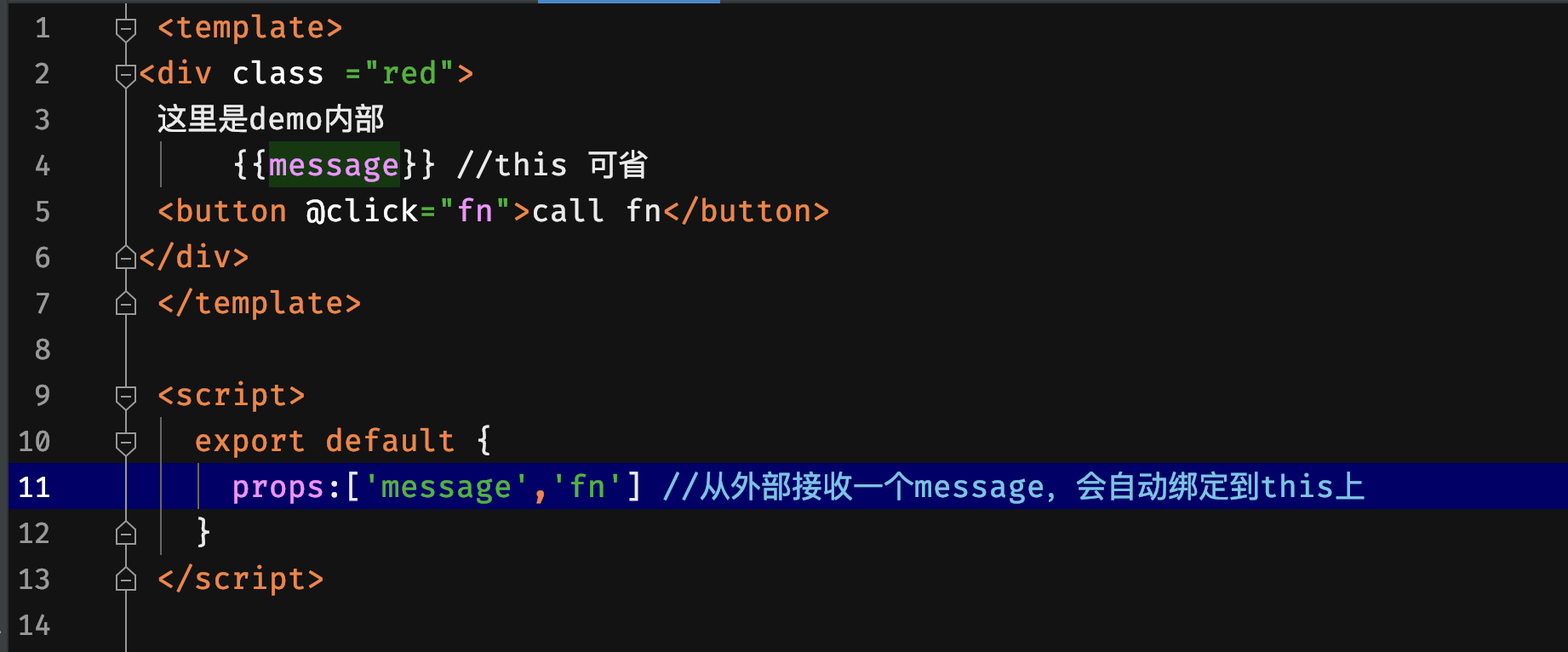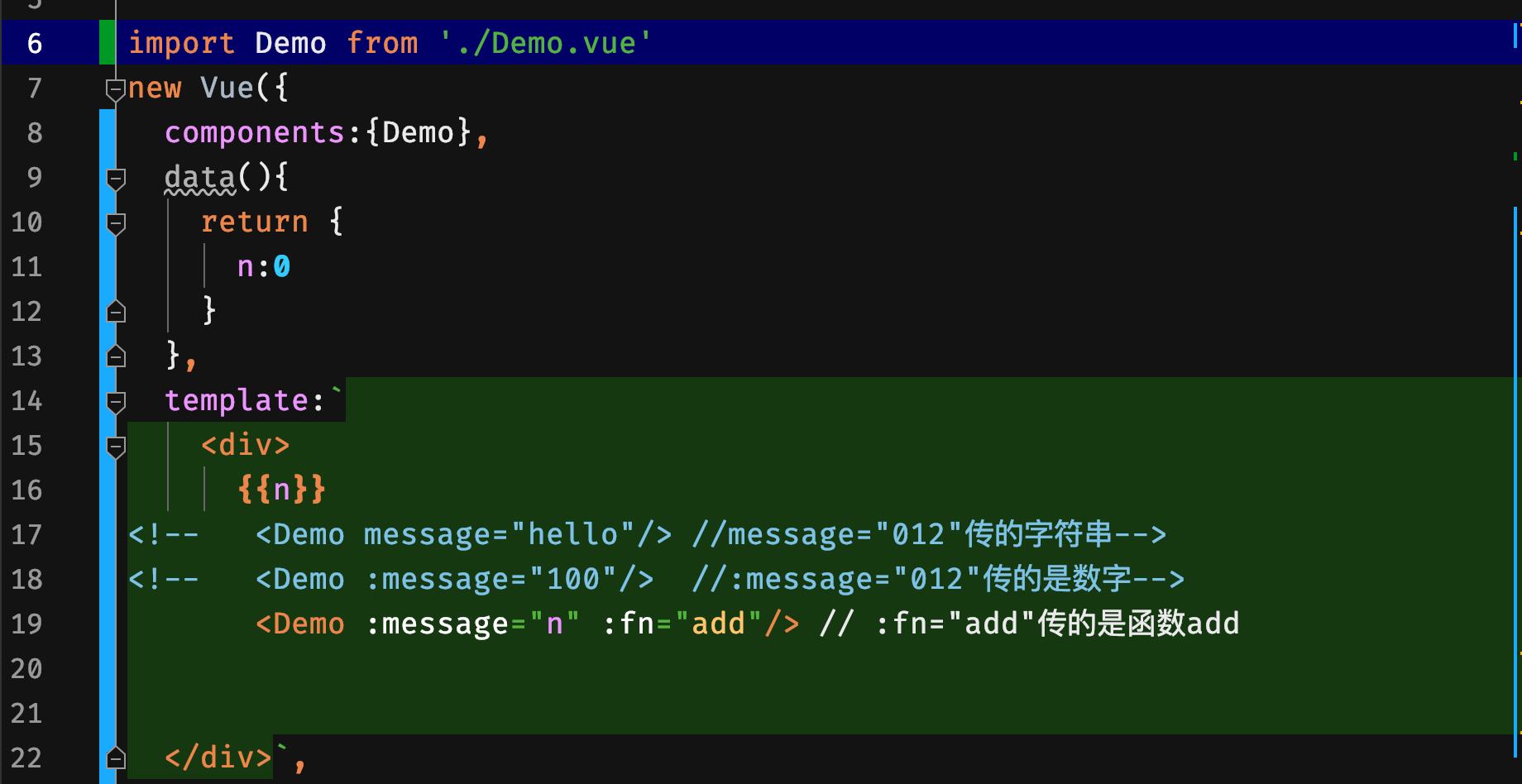一、Vue实例

总结
- 把 Vue 的实例命名为vm是尤雨溪的习惯,我们应该沿用
- vm 对象封装了对视图的所有操作,包括数据读写、事件绑定、DOM更新
- vm 的构造函数是Vue,按照ES6的说法,vm所属的类是Vue
- option是new Vue的参数,一般称之为选项和构造选项
二、参数 option 里有什么
有五类属性
1. 数据:data、props(外部属性)、computed、methods、watch
2. DOM:el(用模板替换页面哪一块,容器)
- template(html 内容)完整版
- render(渲染) 非完整版
- 二选一
3. 生命周期钩子
- beforeCreate(生之前)、created(生之后)
- beforeMount(挂之前)、mounted(挂之后)
- beforeUpdate(更新之前)、updated(更新之后)
- activated、 deactivated
- beforeDestroy(死之前)、destroyed(死之后)
4. 资源
- directives(指令)
- filters(过滤)
- components(组件)
5. 组合
1. parent
2. mixins(混入)
3. extends(扩展)
4. provide(提供)
5. inject(注入)
三、vue组件data为什么必须是函数
new Vue({
el: '#app',
template: `<div>{{demo}}</div>`,
data: {
demo: 123
}
})
在 new Vue中,data写成对象和函数都可以,再组件中,为什么data一定是函数
const Component = function() {};
Component.prototype.data = {
demo: 123
}
var component1 = new Component();
var component2 = new Component();
component1.data.demo = 456;
console.log(component2.data.demo); // 456
解释
component1和component2都引用同一个对象,component1变成456,那么component2也变成456。- 组件的实例化,引用同一对象,如果data是对象,一旦修改其中一个组件数据,另一个也跟着变。
- 但是如果data是函数,Vue组件的data因为是函数有了作用域,互不干扰。
四、外部属性(props)

